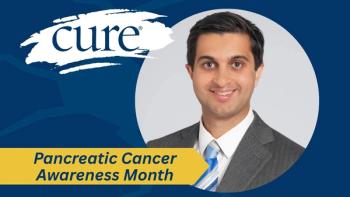
Experts Discuss Next Steps in Perioperative Bladder Cancer Treatment
Key Takeaways
- Perioperative therapy for muscle-invasive bladder cancer includes regimens with Padcev and Keytruda, with potential toxicities influencing treatment completion.
- Individualized treatment planning is crucial, with ongoing research focusing on identifying patients who benefit from adjuvant therapy using clinical characteristics and circulating tumor DNA.
Dr. Joshua Sabari, Dr. Petros Grivas, and Dr. Chandler Park discuss new developments in perioperative therapy for muscle-invasive bladder cancer.
Following the 2025 European Society for Medical Oncology (ESMO) Annual Congress held in Berlin, Germany, we sat down with three leaders in oncology to discuss new developments in perioperative therapy for muscle-invasive bladder cancer.
Sabari is an assistant professor in the Department of Medicine at NYU Grossman School of Medicine and serves as director of High Reliability Organization Initiatives at Perlmutter Cancer Center. Park is a medical oncologist specializing in genitourinary medical oncology at the Norton Healthcare Institute in Louisville, Kentucky. Grivas is a professor in the Clinical Research Division at Fred Hutch, where he also serves as medical director for Local and Regional Outreach and for the International Program. He additionally holds a professorship in the Division of Hematology and Oncology at the University of Washington School of Medicine.
Park began by explaining that some perioperative approaches involve three cycles of Padcev (enfortumab vedotin-ejfv) plus Keytruda (pembrolizumab) before surgery, followed by cystectomy and then additional Padcev afterward, depending on patient tolerance. He noted that other regimens incorporate immunotherapy alone in the postoperative setting without EV. The distinction is significant because Padcev-related toxicities, such as neuropathy and rash, can influence whether patients complete therapy after surgery.
Grivas emphasized the importance of individualized treatment planning, saying not all patients can continue therapy due to side effects. He highlighted ongoing research efforts to better identify which patients benefit from adjuvant therapy through clinical characteristics and tools such as circulating tumor DNA. Determining whether all patients require adjuvant therapy, only selected patients, or whether adjuvant Keytruda alone may be sufficient remains an active area of study.
The panel also discussed the significance of pathological complete response, defined as no detectable cancer in surgical tissue following neoadjuvant treatment. Historically, patients achieving pathological complete response after chemotherapy have demonstrated approximately 85% to 90% cure rates. Longer follow-up is still necessary to confirm whether similar outcomes apply in the immunotherapy era. Grivas added that differences in surgical technique, pathology methods, and clinical trial design can influence how results are compared across studies.
The experts agreed that perioperative approaches in muscle-invasive bladder cancer continue to evolve. Ongoing data will clarify optimal sequencing, guide toxicity management, and support long-term improvements in patient outcomes.
For more news on cancer updates, research and education,





